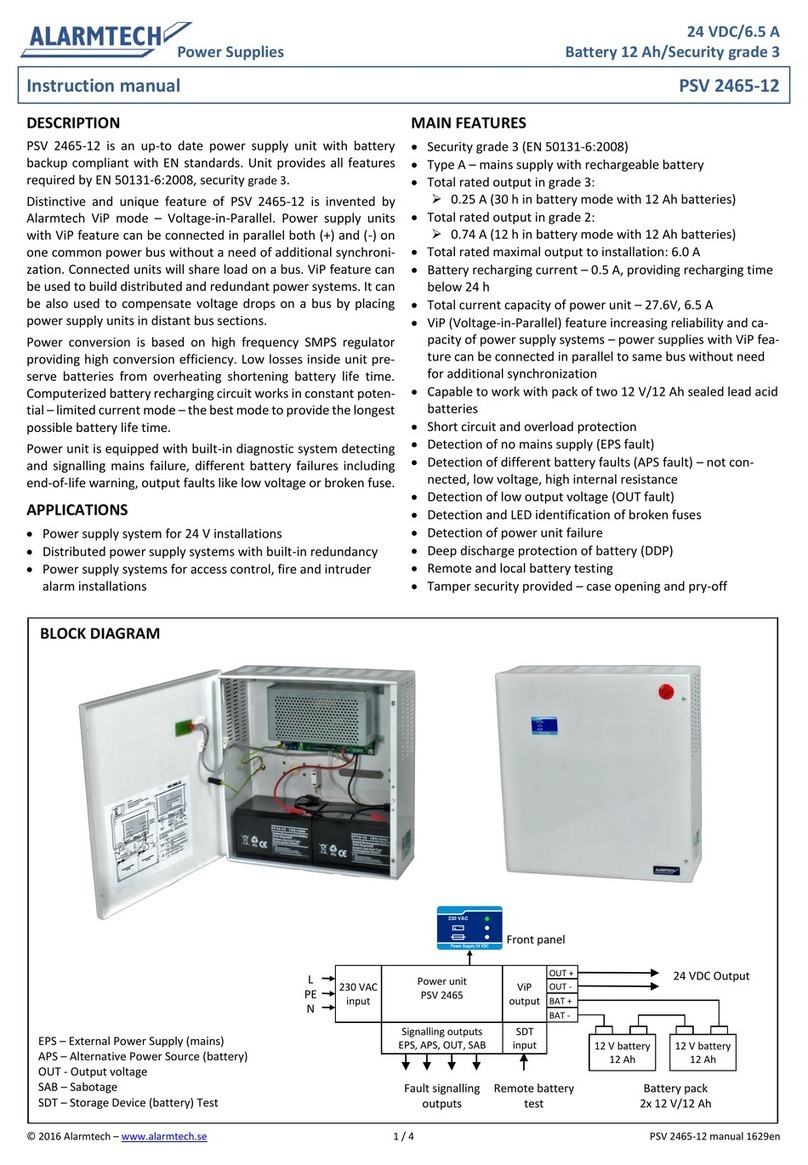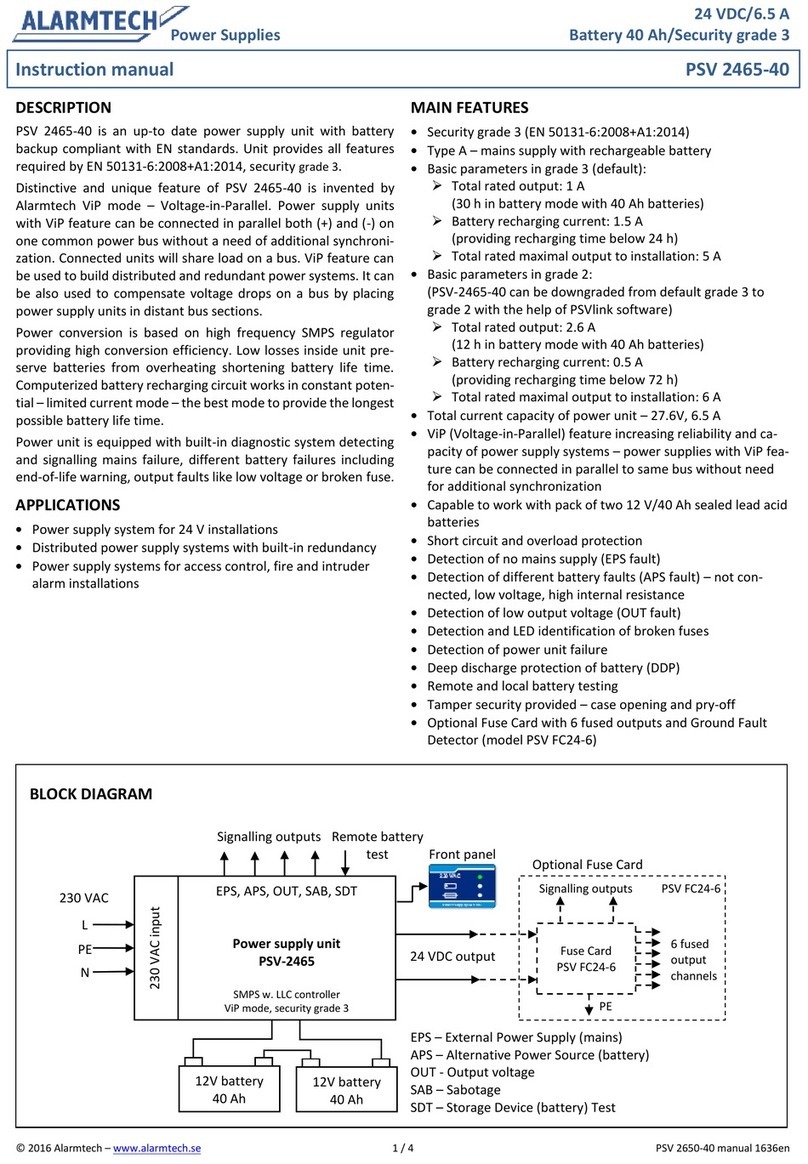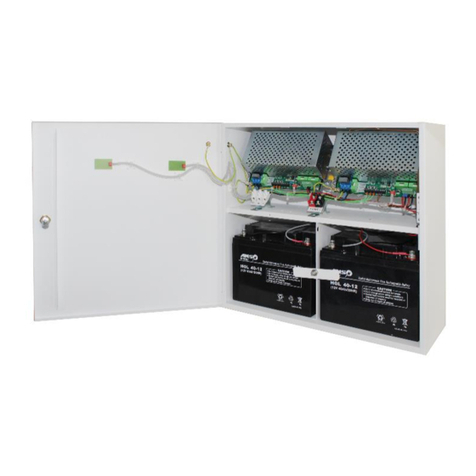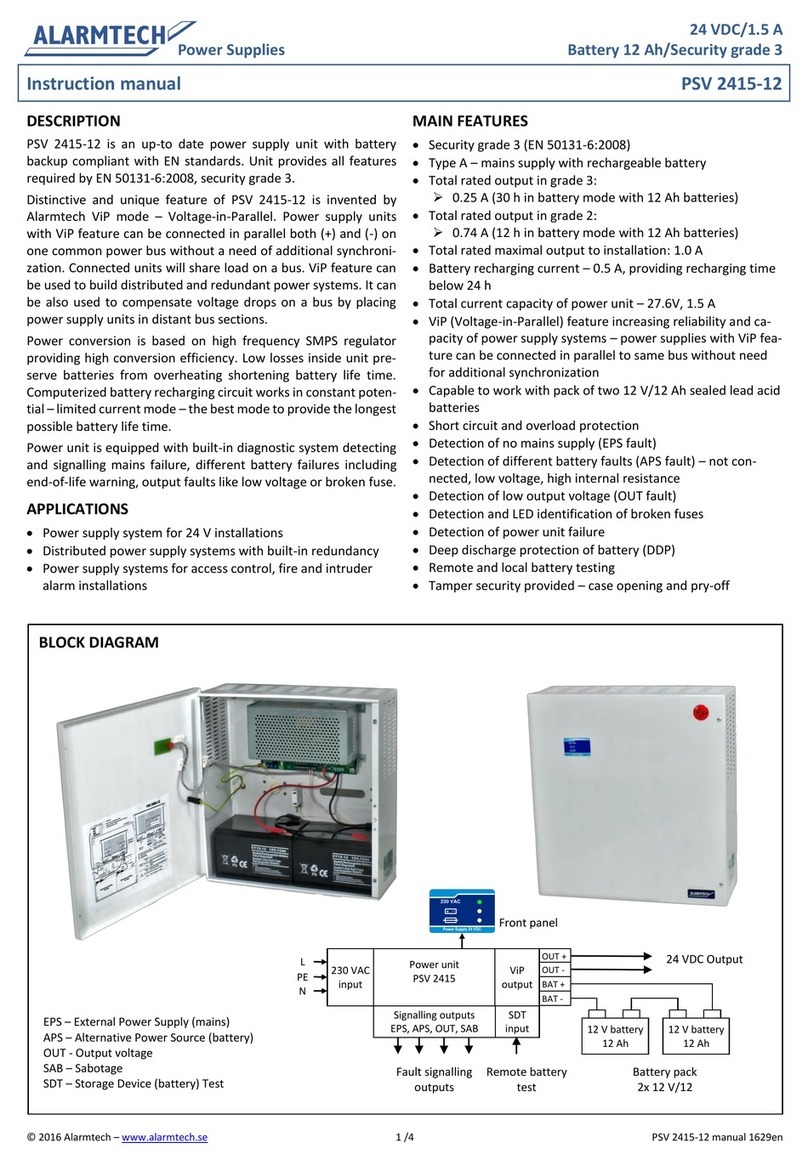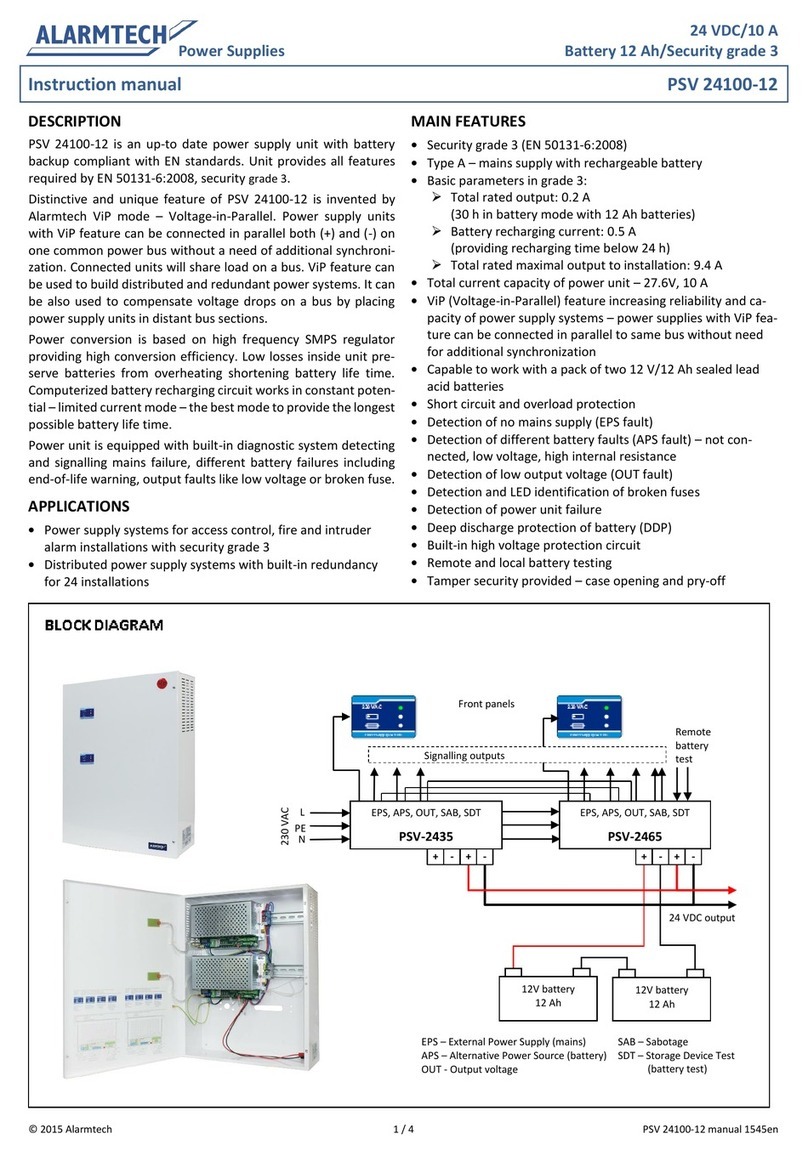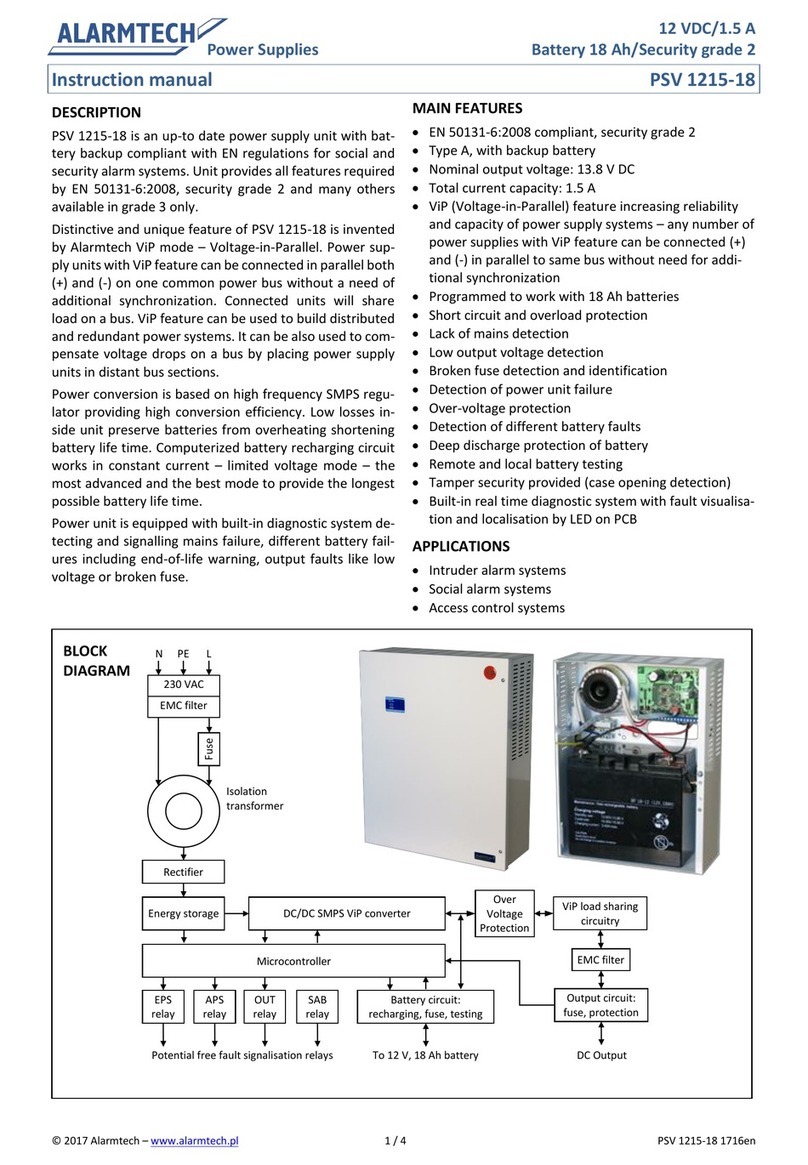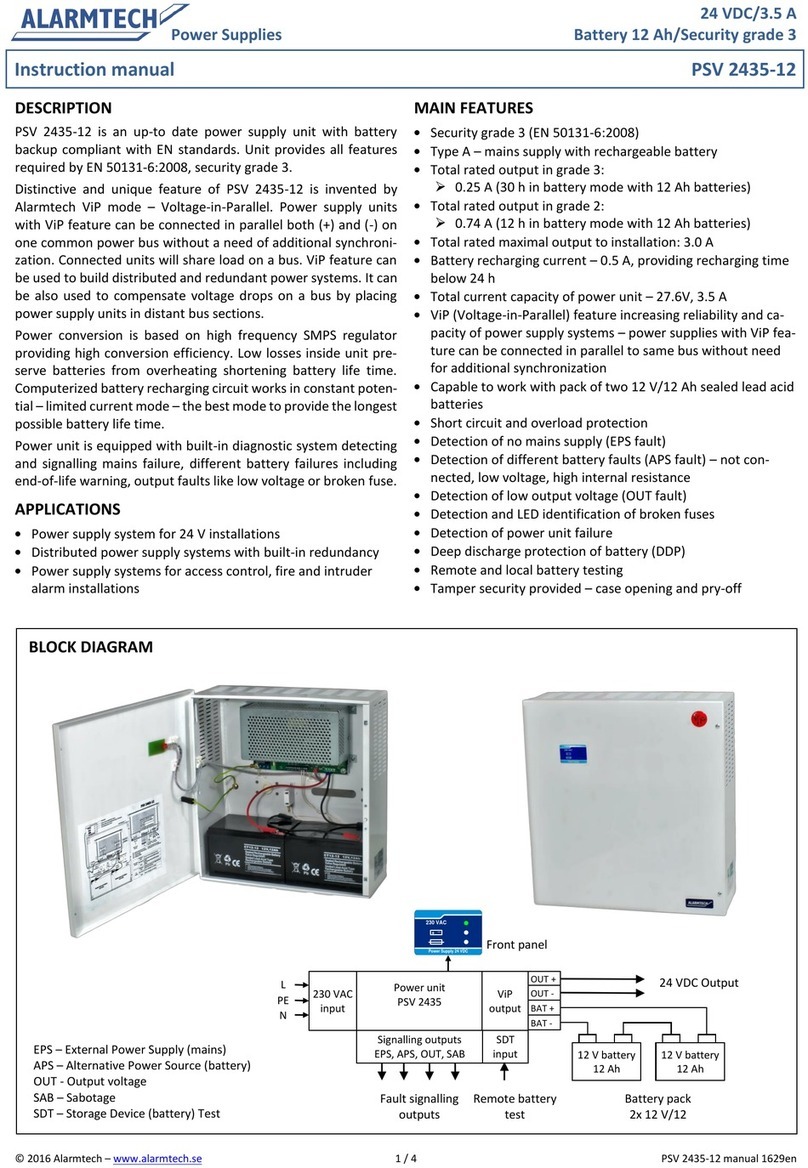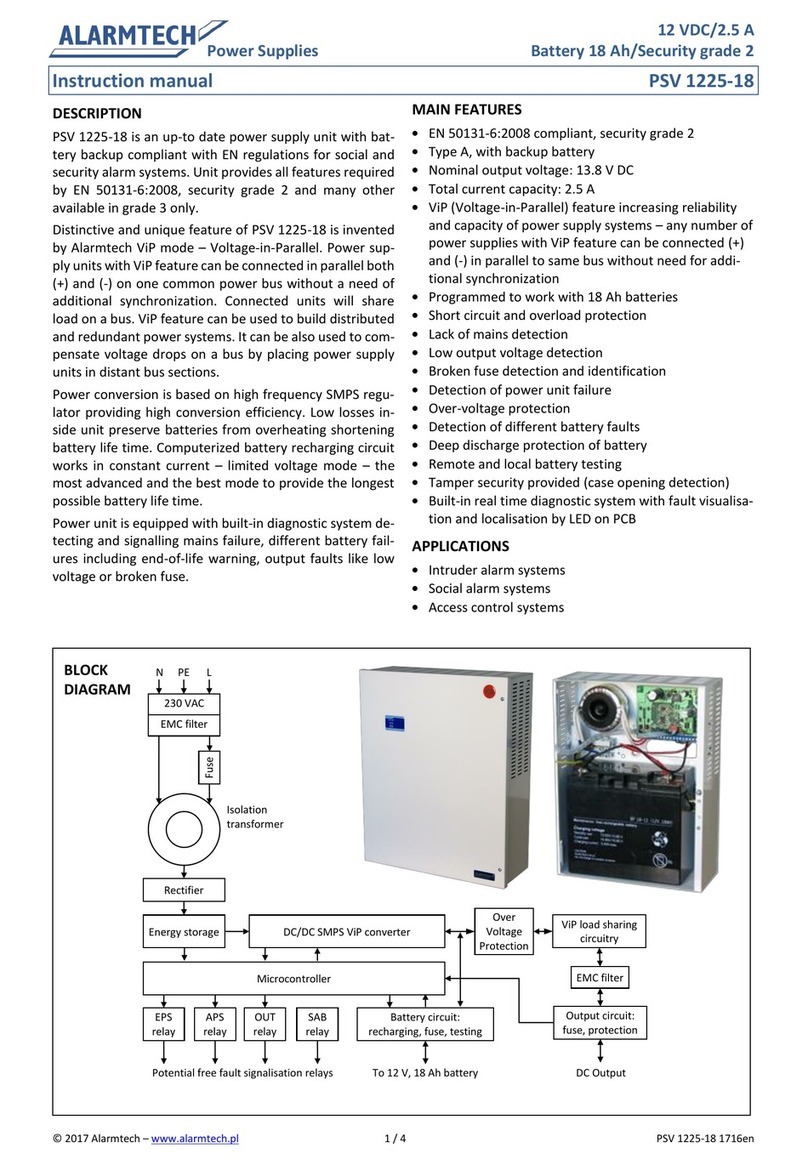
©2015 Alarmtech 1 / 4 PSV 2435-40 manual 1511en
Power Supplies
24 VDC/3.5 A
Battery 40 Ah/Security grade 3
Instruction manual PSV 2435-40
DESCRIPTION
PSV 2435-40 is an up-to date power supply unit with battery
backup compliant with EN standards. Unit provides all features
required by EN 50131-6:2008, security grade 3.
Distinctive and unique feature of PSV 2435-40 is invented by
Alarmtech ViP mode –Voltage-in-Parallel. Power supply units
with ViP feature can be connected in parallel both (+) and (-) on
one common power bus without a need of additional synchroni-
zation. Connected units will share load on a bus. ViP feature can
be used to build distributed and redundant power systems. It can
be also used to compensate voltage drops on a bus by placing
power supply units in distant bus sections.
Power conversion is based on high frequency SMPS regulator
providing high conversion efficiency. Low losses inside unit pre-
serve batteries from overheating shortening battery life time.
Computerized battery recharging circuit works in constant poten-
tial –limited current mode –the best mode to provide the longest
possible battery life time.
Power unit is equipped with built-in diagnostic system detecting
and signalling mains failure, different battery failures including
end-of-life warning, output faults like low voltage or broken fuse.
APPLICATIONS
Power supply system for 24 V installations
Distributed power supply systems with built-in redundancy
Power supply systems for access control, fire and intruder
alarm installations
MAIN FEATURES
Security grade 3 (EN 50131-6:2008)
Type A –mains supply with rechargeable battery
Basic parameters in grade 3 (default):
Total rated output: 1 A
(30 h in battery mode with 40 Ah batteries)
Battery recharging current: 1.5 A
(providing recharging time below 24 h)
Total rated maximal output to installation: 2 A
Basic parameters in grade 2:
(PSV-2435-40 can be downgraded from default grade 3 to
grade 2 with the help of PSVlink software)
Total rated output: 2.6 A
(12 h in battery mode with 40 Ah batteries)
Battery recharging current: 0.5 A
(providing recharging time below 72 h)
Total rated maximal output to installation: 3 A
Total current capacity of power unit –27.6V, 3.5 A
ViP (Voltage-in-Parallel) feature increasing reliability and ca-
pacity of power supply systems –power supplies with ViP fea-
ture can be connected in parallel to same bus without need
for additional synchronization
Capable to work with pack of two 12 V/40 Ah sealed lead acid
batteries
Short circuit and overload protection
Detection of no mains supply (EPS fault)
Detection of different battery faults (APS fault) –not con-
nected, low voltage, high internal resistance
Detection of low output voltage (OUT fault)
Detection and LED identification of broken fuses
Detection of power unit failure
Deep discharge protection of battery (DDP)
Remote and local battery testing
Tamper security provided –case opening and pry-off
Optional Fuse Card with 6 fused outputs and Ground Fault
Detector (model PSV FC24-6)
EPS –External Power Supply (mains)
APS –Alternative Power Source (battery)
OUT - Output voltage
SAB –Sabotage
SDT –Storage Device (battery) Test
Power supply unit
PSV-2435
SMPS w. LLC controller
ViP mode, security grade 3
Fuse Card
PSV FC24-6
6 fused
output
